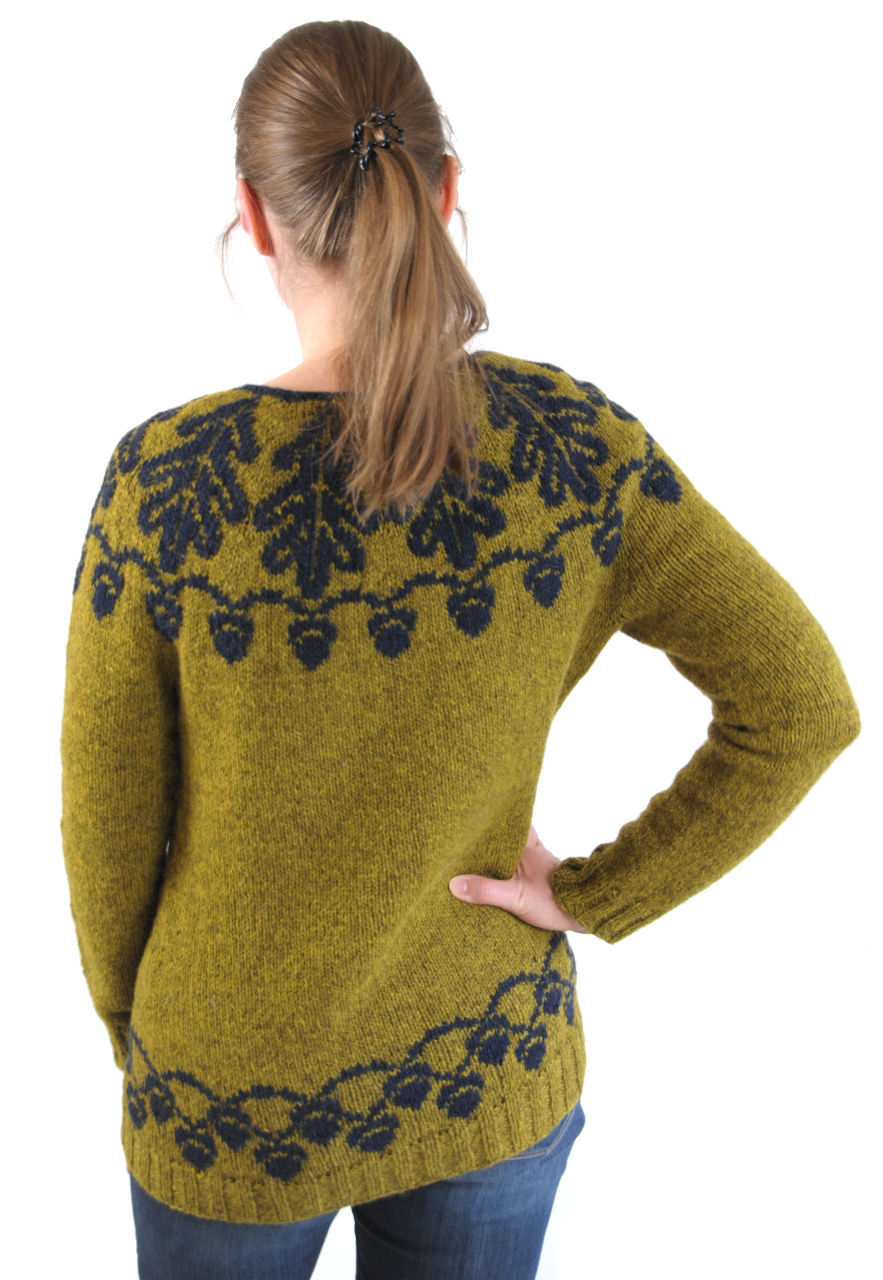Colorwork and Oak Leaves and Acorns, Oh My!
- Susanna
- May 14, 2021
- 3 min read
Late last year Tukuwool contacted me saying they were coming out with a DK-weight version of their yarn and asked if I perhaps wanted to design something with it. I didn't have to think twice: of course I did! Having no inkling on what that something would be I just picked colors that looked nice together and had a good amount of contrast between them. And here it is, my second colorwork sweater design: Terho.
Terho is a top-down sweater with oak leaves and hanging acorns on the round yoke and on the hem. The sweater is knit in one piece from the top down in two colors of DK-weight yarn. The two Tukuwool DK colorways I chose were Selja, a murky yellowish green, for the main color and Tyyni, a dark navy, for the contrasting color. In addition to DK, you could also use a (light) worsted-weight yarn with a gauge of 19 stitches × 29 rounds over 10 cm (or 4").

In hindsight, it's a bit of an odd combination considering the theme of the colorwork motifs... but it works. If I had the choice now, I'd probably pick a more autumnal color pairing. But this just means I'll have to knit another one in a new color combo! Maybe a cardigan version, hmm?
The sweater starts with a contrast-colored i-cord cast-on around the neckline. The first few stitches are cast on provisionally and the last few stitches left live so that the beginning and end of the i-cord can be grafted together. This creates a nice, seamless and (almost) invisible beginning to the sweater.
Because of the largish gaps between the colorwork motifs, there are some pretty long floats in this sweater. For managing those I recommend using the Ladderback Jacquard technique as it makes catching floats completely invisible on the right side of the work. For many people their stranded stockinette tends to be tighter than one-color stockinette. Ladderback Jacquard also helps in this because it introduces a little bit more stretch into the colorwork portions.
Short rows and raglan increases are knit simultaneously after the colorwork portion is done. (The construction is pretty much the same as in Muscardin except there are no raglan increases in some sizes.) Unlike in Muscardin, though, the sleeves are knit completely in one color. The hanging acorns make another appearance at the bottom of the hem just before ribbing. Instructions for the colorwork motifs are given only as charts.
The body of the sweater can be knit with or without waist shaping; instructions for both options are included in the pattern. This makes the design unisex, fit for many body shapes and sizes. In fact, one of my test knitters made the sweater for her size 5X son — sans waist shaping.
The pattern for Terho is size inclusive: it comes in 9 sizes from XS to 5X, to fit a bust circumference of 75–155 cm (or 30–62") with approx. 2.5–7.5 cm (or 1–3") of positive ease. To knit the sweater you need approx. 850–1750 m (or 900–1900 yd) for the main color and 190–400 m (or 210–430 yd) for the contrasting color. Size-by-size yardage requirements are listed on the pattern page.
Terho is now available on Payhip, LoveCrafts, and Ravelry (seizure warning)! Share photos of your sweater on Instagram with the hashtags #terhosweater and #talviknits.
Pin this post!













![How to Knit Horizontal, No-sew Pockets [TUTORIAL]](https://static.wixstatic.com/media/2a6e85_390ca6ed3a134b69b8e93076c2d0c656~mv2.jpg/v1/fill/w_292,h_438,fp_0.50_0.50,q_90,enc_avif,quality_auto/2a6e85_390ca6ed3a134b69b8e93076c2d0c656~mv2.webp)
Comments